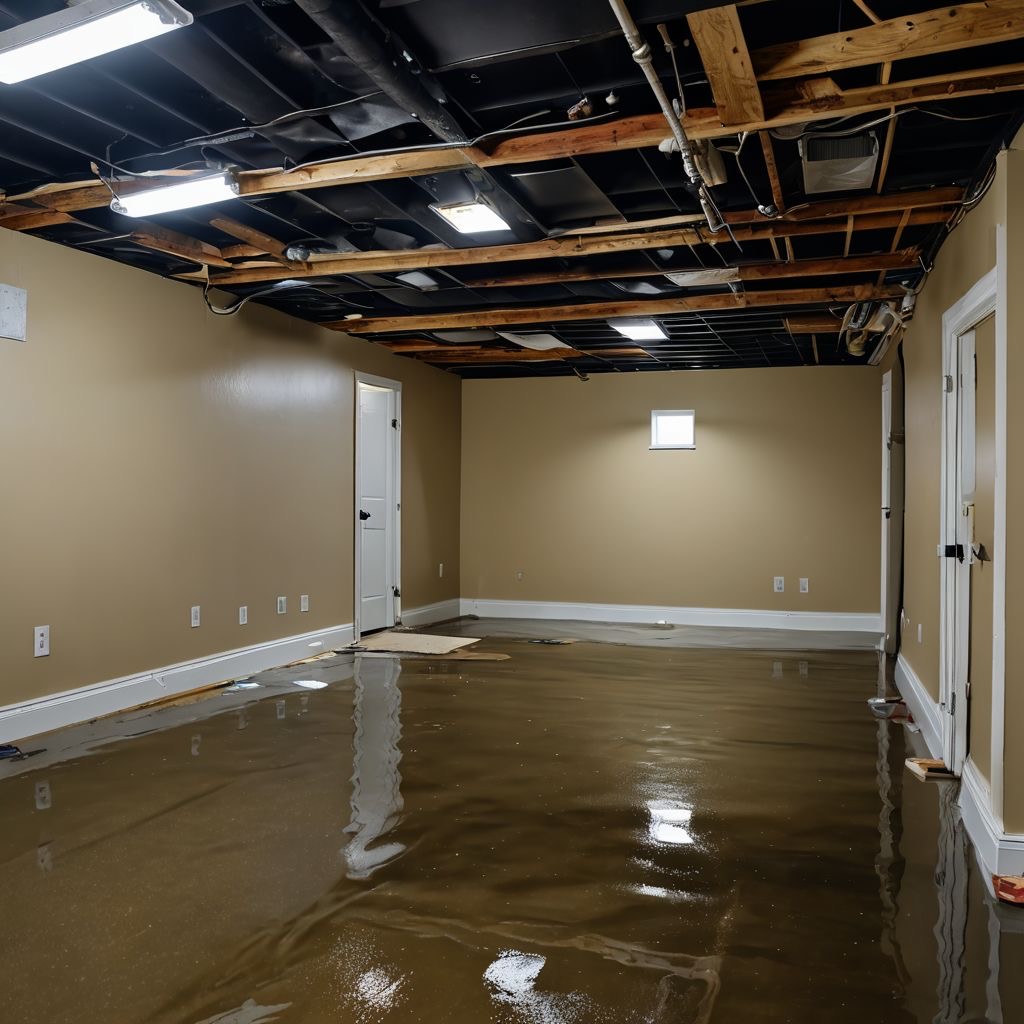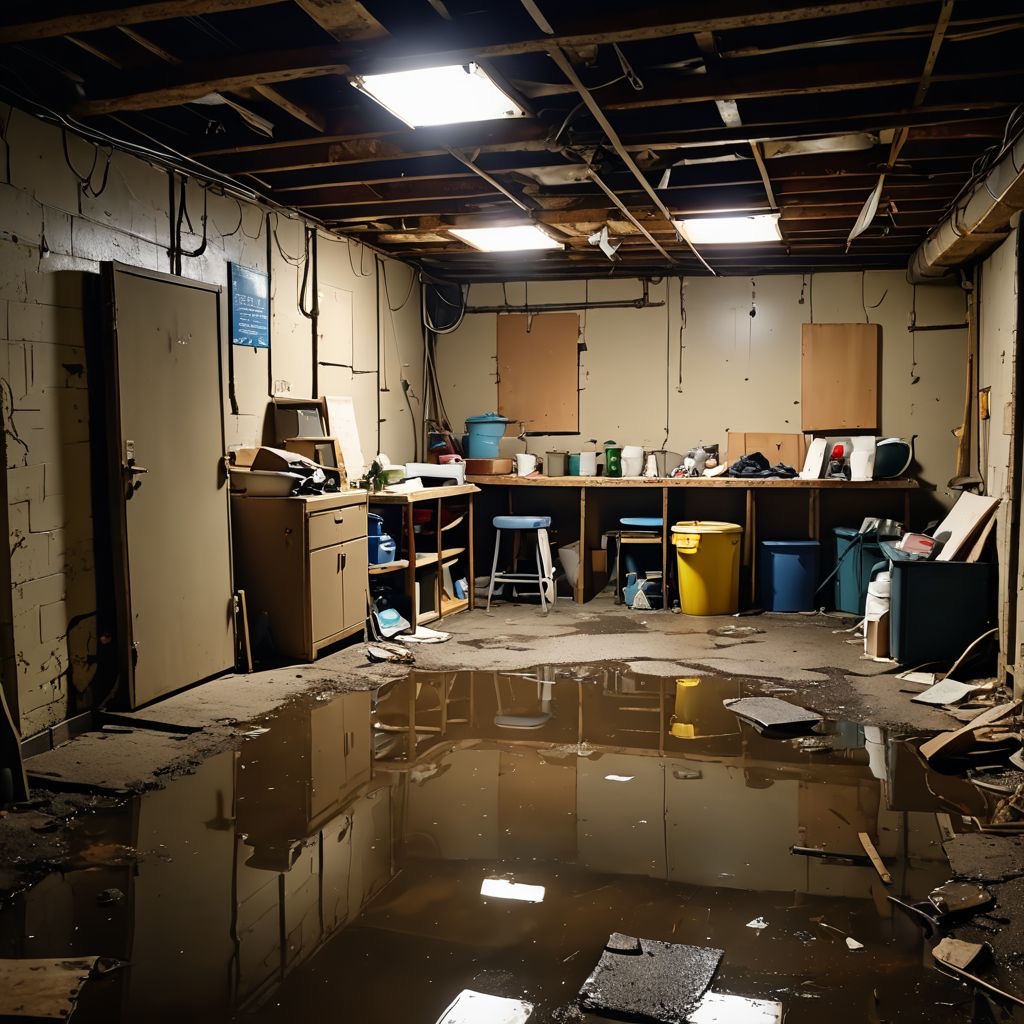
Table of Contents:
1. Introduction
2. The Significance of Proper Drainage
3. Water Damage: The Nightmare Homeowners Fear
4. Landscaping Design Techniques for Drainage
- 4.1 Grading Your Landscape
- 4.2 Effective Flower Bed Design
5. Utilizing Hardscapes for Better Water Management
- 5.1 Retaining Walls
- 5.2 Creating Patios and Pathways
6. Incorporating Water Features Safely
7. Communication with Landscaping Professionals
- 7.1 Finding Landscaping Companies Winnipeg
8. Regular Landscape Maintenance for Optimal Drainage
9. Conclusion
1. Introduction:
Hello there! So, you’ve made the massive leap to owning a lovely home. You’ve got your curtains hung, your garden gnome placed just so, and the neighbors are already starting to question your taste in lawn decorations. But wait! Have you taken the time to make sure that your landscaping will help prevent your fabulous oasis becoming a soggy mess? If you’re not paying attention to proper drainage around your foundation, you could soon find yourself in a puddle of regrets!
Don't Forget This:
Water is sneaky and water damage is the #1 most common reason people submit home insurance claims. It loves to lurk where you least expect it, and, if you’re not careful, it can lead to water coming into your home from around your window wells and foundation. But don't worry! Together, we’ll explore why proper landscaping matters, the consequences of poor drainage, and nifty techniques to ensure that rainwater runs away from your home, not towards it.

2. The Significance of Proper Drainage:
Let’s talk about why proper drainage matters, what that rain does when it falls on your lovely landscape. When it rains, water can pool around your foundation if your yard isn't properly landscaped. This can lead to oversaturation, which invites unwanted trouble for your home and your personal belongings. Never heard of *oversaturation*? Think of it as a party crasher at an exclusive gathering—except this one wants a permanent residency in your basement. Seriously, that’s how damage happens!
The Numbers Speak:
According to the Insurance Information Institute, water damage is the leading cause of homeowner insurance claims, accounting for over 20% of all claims filed. Underlying factors such as overland flooding and groundwater breaches can turn a “dream home” into a “nightmare project.” Yikes!
3. Water Damage, the Nightmare Homeowners Fear:
You might ask, “How bad can it really get?” Well, for starters, you might know that water damage not only affects structural integrity but also promotes mold growth, poor air quality, and loss of property value. Yes, we all love a good haunted house story, but none of us are keen to have one happening right in our homes!
Water can come from various sources—heavy rains, snowmelt, or inadequate drainage systems. It can seep through cracks in your foundation, damage your walls, and wreak havoc on your electrical systems. It’s like water decided to throw a wild party inside your house while you were out.
Some Quick Statistics:
- According to a study by IBHS (Institute for Business & Home Safety), nearly 60% of homeowners who experience water damage due to poor drainage have to deal with significant repair costs. And guess what? Those don’t typically come cheap; average repair costs can easily exceed $20,000! And, to make matters worse, rising insurance rates following a claim will add insult to injury. Put simply, drainage issues are like that hidden drama in your favorite soap opera—intense and sometimes shocking.
An excellent example of proper landscape grading directing water away from the home's foundation.

4. Landscaping Design Techniques for Drainage:
Alright, enough about doom and gloom—the next part is all about how you can avoid these water-related disasters with some strategic landscaping. Time to turn that frown upside down and get your yard working hard for you!
4.1 Grading Your Landscape
Grading is your first line of defense. Think of it as altering the natural slope of your yard, ensuring that water flows *away* from your home instead of ironically being attracted to it like a moth to a flame. Ideally, your landscape should slope away from your house by about 5% for roughly the first ten feet surrounding the foundation.
How to Grade Your Yard:
1. Survey the Area: Get down on your hands and knees (yes, it’s okay to make soil angels!) and check the slope of your yard.
2. Plan the Grade: If you observe that water tends to pool near your foundation, plan to raise that area (using soil or rock) to draw water away.
3. Install Drainage Solutions: Sometimes grading isn’t enough. In those cases, you'll want to consider *dry wells* or *French drains* that help carry water away.
4.2 Effective Flower Bed Design
Ah yes, the flower bed—a bouquet of colors and scents! But beyond aesthetics, the right flower bed design can also encourage drainage. Creating raised flower beds allows for better drainage and prevents standing water.
Tips for Flower Bed Design:
- Use Native Plants: They generally require less water and can handle heavy rain easily.
- Consider Mulch: A layer of mulch helps retain soil moisture but also protects the surface from heavy rains.
- Integrate Swales: These are shallow trenches that help slow down water flow, allowing it to spread and sink into the ground better.
5. Utilizing Hardscapes for Better Water Management:
Did you think we were done with landscape integration? Nope, not quite yet! Let’s move on to hardscaping. Incorporating non-plant materials can efficiently manage water and still offer a stylish aesthetic.
5.1 Retaining Walls
Think of retaining walls as the superheroes of your yard, standing sturdy against the forces of nature! They create flat areas for planting and can direct water away from the foundation. You can build them using interlocking brick, stone, or concrete blocks.
Key Benefits:
- Prevents Erosion: Keeping soil in place so it doesn’t wash away
- Aesthetic Appeal: They can add unique design elements to your property that neighbors may envy.
- Water Management: Properly designed retaining walls can redirect water away from the home and keep your landscape looking great.
5.2 Creating Patios and Pathways:
Patios and pathways can also play a major role in directing water. For instance, a well-designed patio will provide a flat surface for social gatherings while ensuring water redirects toward appropriate drainage areas.
Outdoor Tiles and Stones
Opt for permeable paving stones that allow water to seep through and reach the ground rather than pooling on top. This keeps the area looking sharp while tackling water management for you.
6. Incorporating Water Features Safely:
Water features are the cherry on top of the landscaping sundae! Whether you’re considering a pond, fountain, or a slick waterfall, these additions can enhance aesthetics while still incorporating proper drainage considerations.
Planning Your Water Features:
1. Location, Location, Location: Make sure that your water feature is not too close to your home's foundation.
2. Drainage System: Have a system in place for excess water. A well-planned feature should not create pool problems; it should delight, not drown!
3. Maintenance: Regularly check your water features to avoid overflow during heavy rainfall, particularly in Winnipeg, where the copious amounts of snow can melt rapidly come spring.
The Best Landscaping Companies Winnipeg has to offer offer customized designs and expert installation

7. Communication with Landscaping Professionals:
If you're just not the DIY type, you might want to call in the cavalry—the landscaping professionals! Expertise in landscape design Winnipeg is crucial, primarily if drainage is a concern in your area.
7.1 Finding Landscaping Companies Winnipeg

When looking for quality landscaping, consider searching out to landscaping contractors near me or searching for Winnipeg landscape companies. Here’s how to find a credible partner for your landscaping needs:
- Read Reviews: Check online reviews for landscaping companies . If they have more glowing comments than a sun worshipper, you’re likely on the right track.
- Get Quotes: Don’t hesitate to ask for multiple quotes from multiple landscapers. Comparing them can save you some serious cash!
- Ask for Credentials: Verify if they have experience with residential landscaping Winnipeg and what additional services they offer and have experience with—pond installation, hardscaping, and of course, drainage and proper grading.
8. Regular Landscape Maintenance for Optimal Drainage:
So, you’ve done all this hard work, and now it’s time to put it into action with regular landscape maintenance. It's just like keeping your car clean—neglect it, and you run the risk of problems.
Tips for Ongoing Maintenance:
- Keep Gutters Clean: Clogged gutters can redirect water down towards your foundation. Make it a habit—grab a buddy and clear those out (bonus points for turning it into a scavenger hunt!).
- Inspect Regularly: Make a point of checking your landscaping for potential pooling spots or anything that looks odd after (or better yet- before a rainstorm).
- Prune and Trim: Overgrown flora can hinder proper drainage and trap moisture. A little trimming goes a long way!
9. Conclusion:
Understanding the importance of landscaping around your house is more than just about making your yard look good; it’s about protecting your home and its contents! Proper drainage isn’t just a luxury—it’s a necessity. With the right techniques, you can promote efficiency and keep your property safe from unwanted water intrusion.
Rain may fall, but with the proper landscaping techniques, you can rest easy knowing you’ve done your part to protect your walls, windows, and the precious foundation of your home from becoming a summer kiddie pool!
So roll up those sleeves, grab that shovel and wheelbarrow—or call a trusted landscaping contractor—and let’s move toward a water-controlled future! May your home remain dry, your plants flourish, and your water features be the talk of the town!
**Note:** This article is meant to be written in a friendly, engaging style, highlighting the significance of proper landscaping to achieve optimal drainage to prevent damage to your home. For more specific data and customized advice, consult local landscaping experts who can provide tailored recommendations for your space and perhaps take the time to speak to your home insurance broker to make sure you understand your insurance limits and what your insurance covers you for, and perhaps, just as important, what it does not cover you for.
**Additional Cautionary Note** on Landscaping in Winnipeg:
As you embark on your landscaping journey in Winnipeg, it's crucial to recognize the importance of understanding local regulations and permits before you dig in. The city of Winnipeg has specific guidelines and requirements that govern landscaping projects, and navigating these rules can be a daunting task for even the most enthusiastic DIY homeowner. This cautionary advice aims to provide insight into what projects may require a permit, the potential frustration of the permitting process, and why hiring a professional landscape contractor may ultimately be your best option.
Examples of Projects That Require Permits:
In Winnipeg, various landscaping projects necessitate specific permits from the city to ensure safety, environmental compliance, and aesthetic harmony. Common projects requiring permits include:
1. Major Grading or Site Alterations: If your landscaping plans involve changing the land's topography, such as extensive grading or earth moving, you will likely need a permit.
2. Retaining Walls: Building walls that exceed a particular height (generally over 1 meter) falls under regulations, as improper construction could lead to soil erosion or drainage issues.
3. Decks and Patios: Constructing a deck or patio that is freestanding or attached to a structure may require a permit, especially if it alters any designated utility easements. Decks that are designed to be more than 24 inches above the ground require a permit.
4. Fencing: While smaller fences and “Permitted Fences" may often be constructed without a permit, taller structures or those placed along property lines might need approval.
5. Water Features: Ponds, swimming pools, or significantly sized water features typically require permits to ensure they meet municipal safety standards.
6. Planting Trees: In some cases, planting trees within specific distances from utility lines or property lines requires a permit, particularly for larger species.
7. In Winnipeg, whether you need a permit for constructing a gazebo or pergola typically depends on a few factors, including the size, height, and style of the structure, as well as its intended use.
Gazebos
- Permits Required:
Generally, a gazebo that exceeds a certain height (often around 1 meter or 3.28 feet) or has a foundation may require a building permit. If it is considered a permanent structure and is within proximity to property lines or utility easements, you will likely need to seek approval from the City.
- Permits Probably Not Required: Smaller, portable gazebos or those that are less than a specific height (check local regulations for exact specifications) may not require a permit.
Pergolas
- Permits Required: Similar to gazebos, larger pergolas, especially those that are attached to a house or exceed height limits, may necessitate a permit. If they involve electrical work for lighting or fans, permits will also likely be required.
- Permits Probably Not Required: Smaller, freestanding pergolas often do not require permits, as long as they comply with local zoning regulations.
Projects That May Not Require Permits
On the flip side, many landscaping projects can be undertaken without the need for city permits. These include:
- Planting annual or perennial gardens
- Installing small-scale decorative features like bird baths or planters
- Adding mulch or gravel to garden beds
- Minor repairs or modifications to existing landscapes (dependent on local regulations)
Changes in Regulations:
It is essential to bear in mind that regulations and codes can and do, change over time. What may have been permissible last year could be subject to new rules today. For this reason, the best practice is to always check with the City of Winnipeg’s Planning, Property and Development Department before commencing any landscaping project, regardless of its scale. Up-to-date information can save you from potential fines or the need to redo work that doesn’t meet current standards.
Consider Hiring a Professional:
While the allure of a DIY project can be strong, it's important to acknowledge the intricacies involved in complying with city regulations. The permitting process can be time-consuming and frustrating, often leading to delays in your landscaping plans. Understanding the nuances of local laws, submitting the necessary documentation, and ensuring compliance can swallow up valuable time and resources.
By hiring a professional landscape contractor with expertise in Winnipeg's regulations, you not only expedite the process but also gain invaluable knowledge and experience that can enhance the quality of your project. Professionals often have established relationships with city officials and are familiar with the permitting process, thus minimizing potential hiccups along the way.
In conclusion, while landscaping can be an exciting and fulfilling endeavor, it requires careful consideration of local regulations and permits.
Always consult the city before starting any project, and consider the long-term benefits of hiring a knowledgeable professional familiar with local regulations to navigate these complexities for you.

